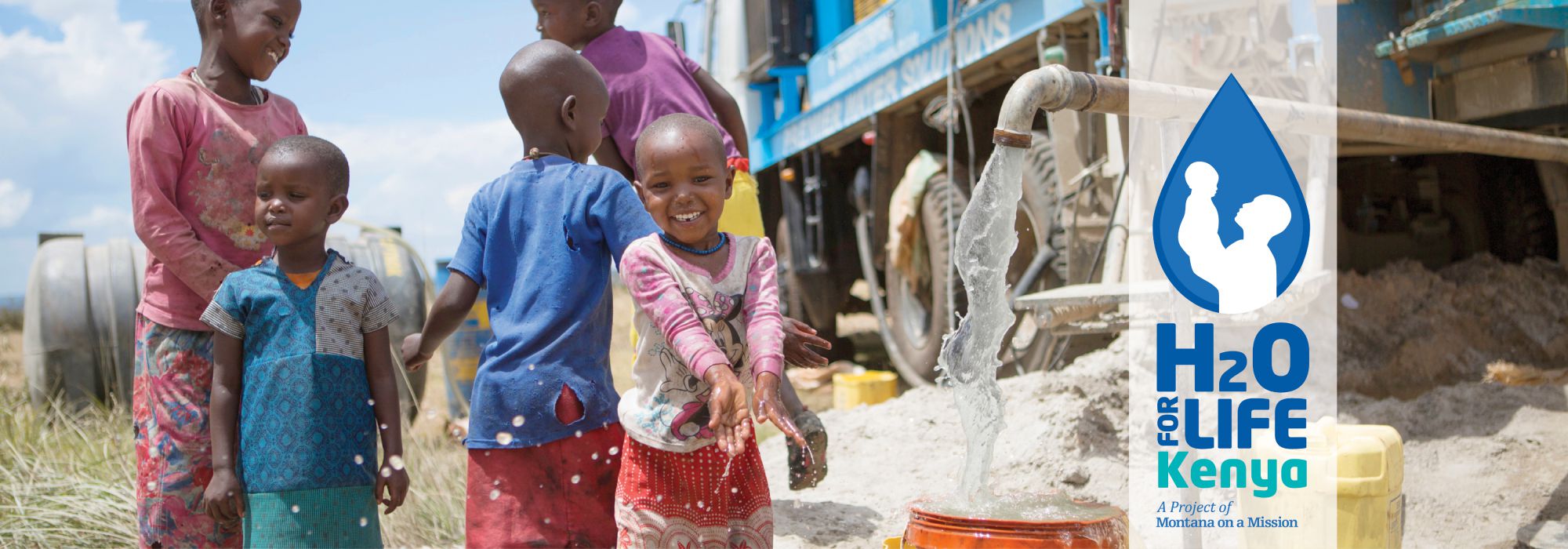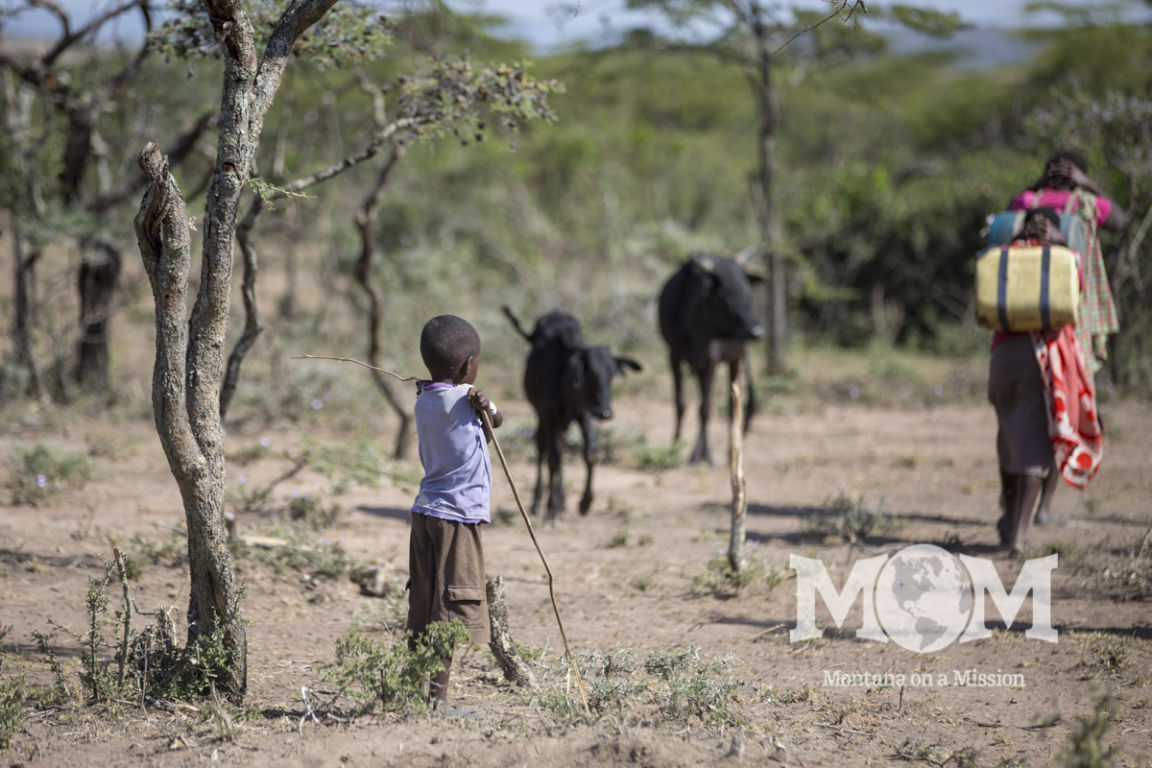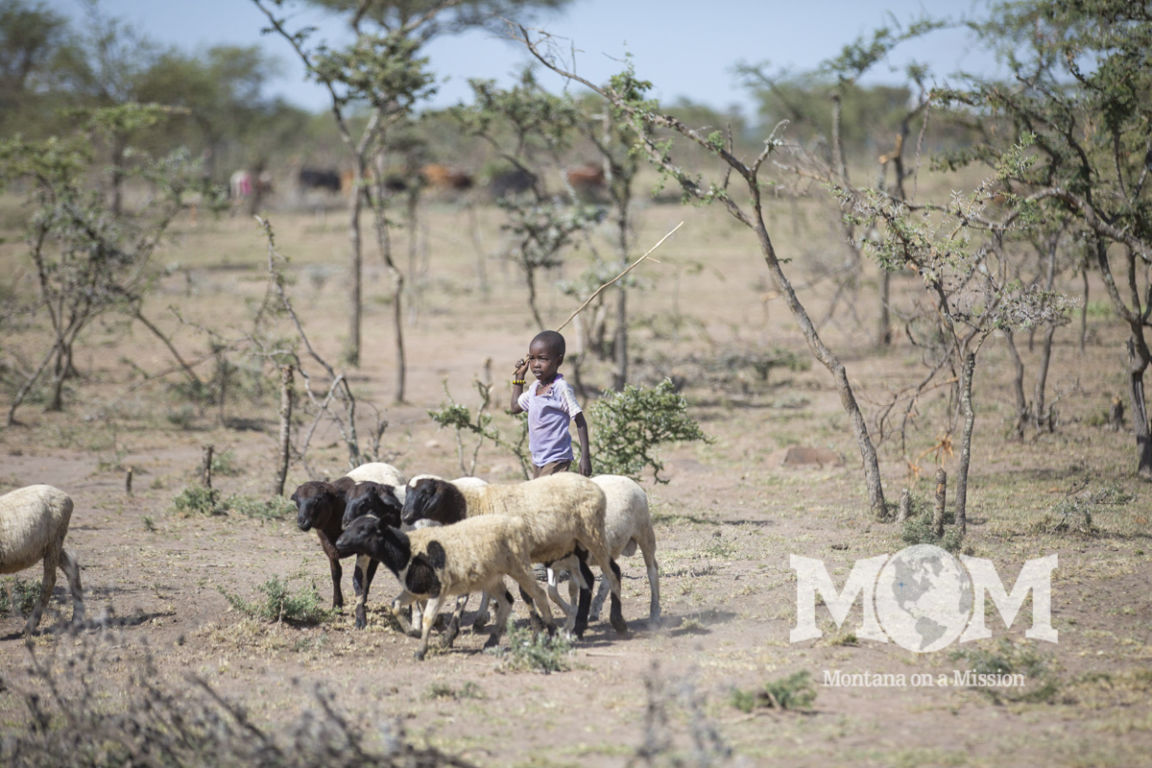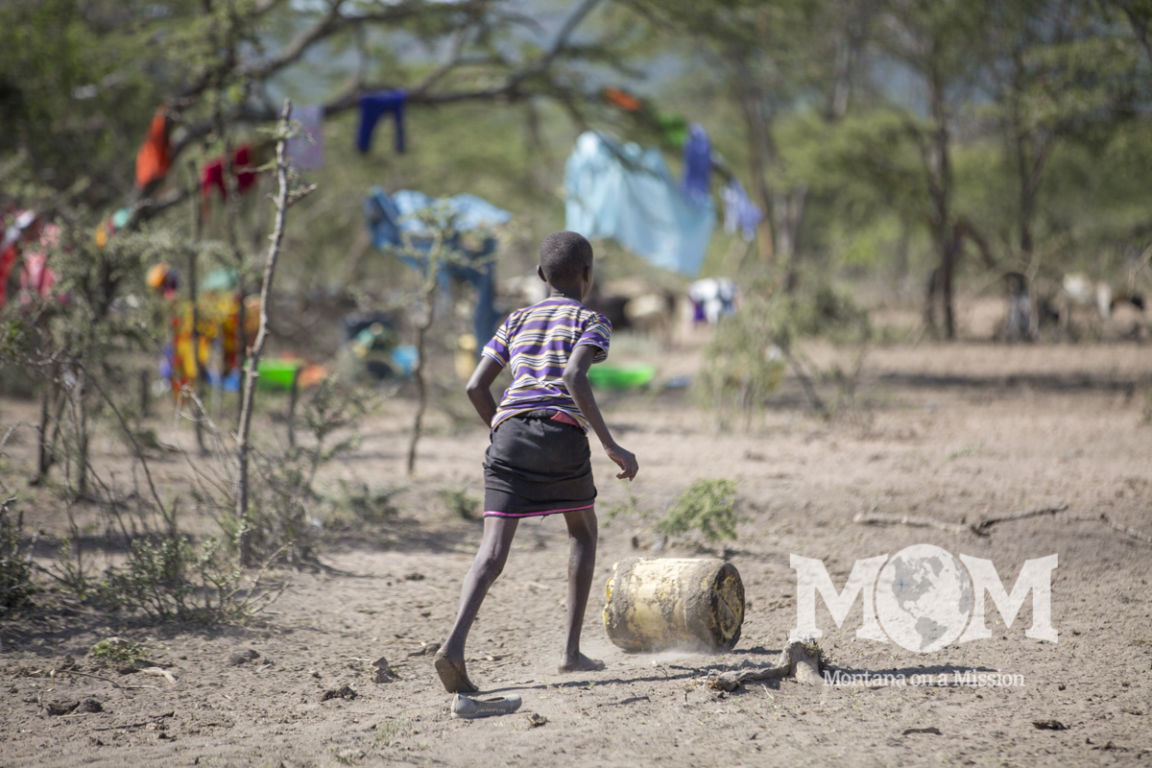Nestled in a small corner of Southern Kenya is a small Maasai village called Ripoi. This village, though worlds away, has many similar qualities of any small agricultural town you may come across in the United States. Young children run around swatting each other with sticks. Older boys tend to the herds and protect them from the wild animals. A mother prepares a meal with the help of her daughters. A rough winding dirt road is the only access to and from the village. But that is where the similarities end!
Ripoi village is tucked away in a small valley at the base of a hill. The trees and aloe plants line the horizon as the sun beats relentlessly on the wildlife, people and livestock. Humans and animals alike congregate around the small and rare puddles of water. They hang in the shade of the trees waiting for their turn to approach the water and get a drink. Unlike here, getting water is a daily and life threating ordeal.
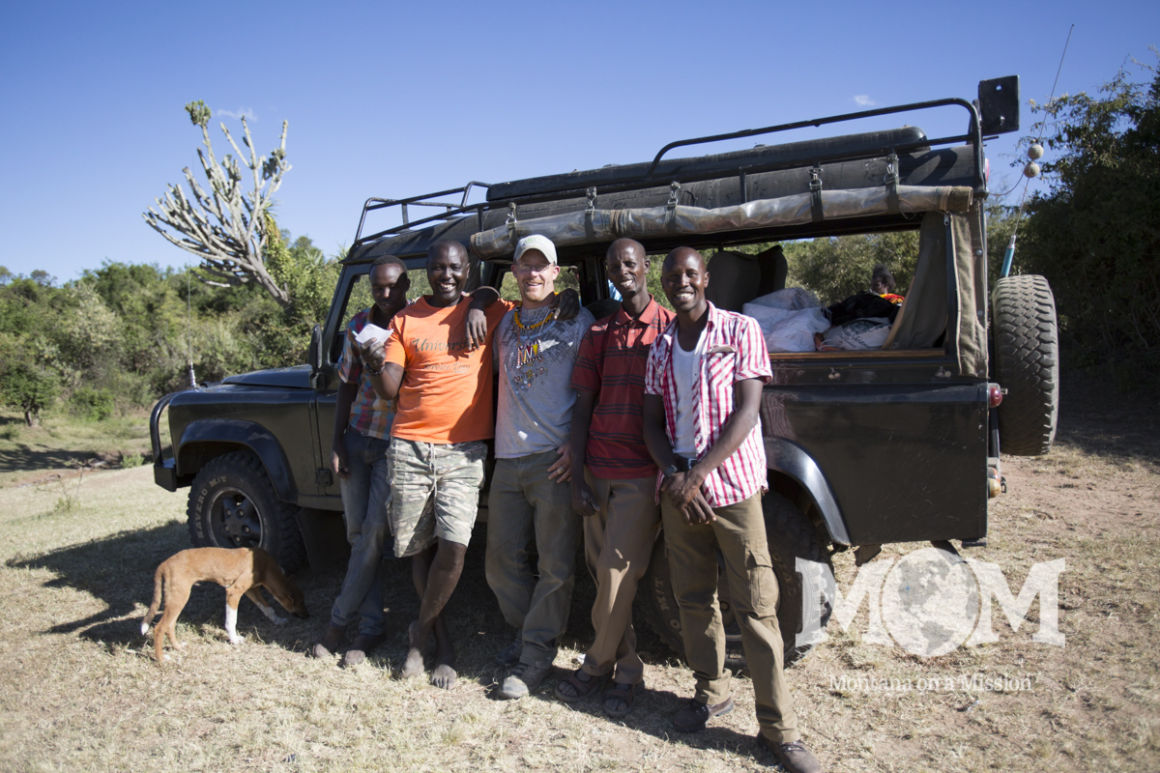
Montana on a Mission works in partnership with the local community to plan and build clean water projects.
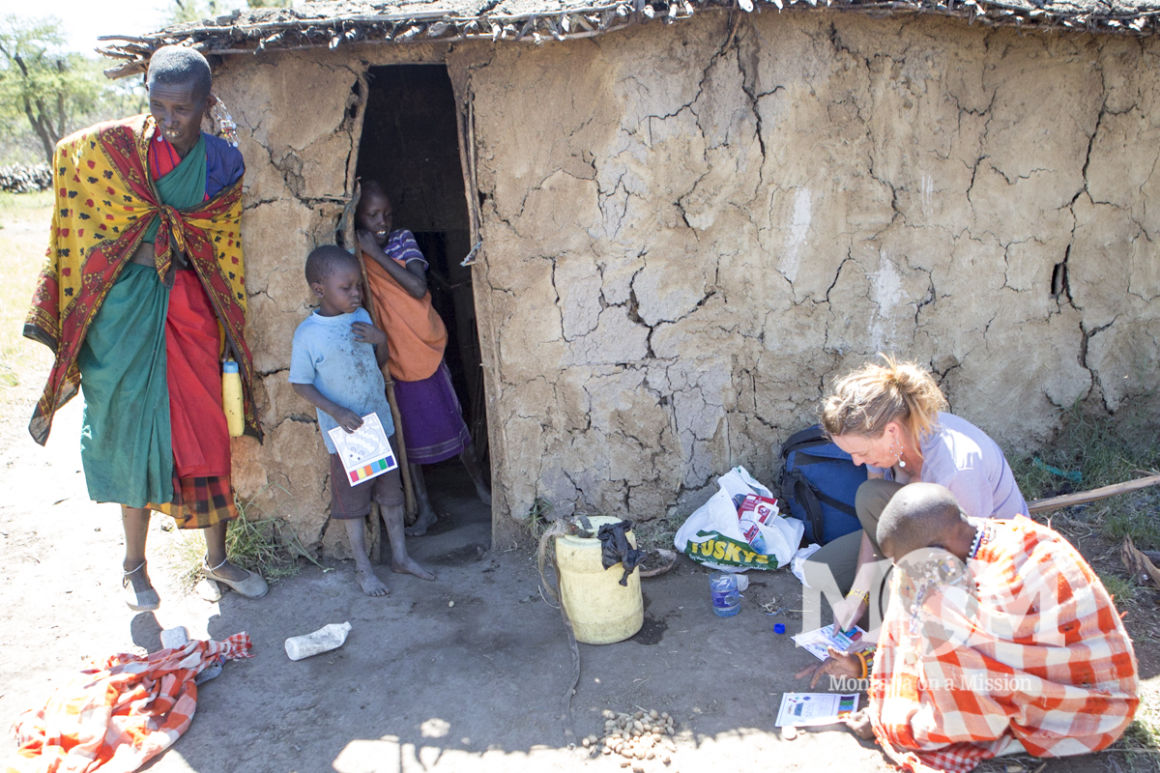
One of the best parts of a water development project is getting to know the community and building relationships with the local families.
When we first pulled up to the spring at Ripoi there was no one there. We walked around the site looking at the project. I was astounded that this small puddle of water about the size of a couple bird baths was their only source of water. Slowly people started showing up. A mother with her two young daughters came to scoop water out of the shallow indent in the earth.
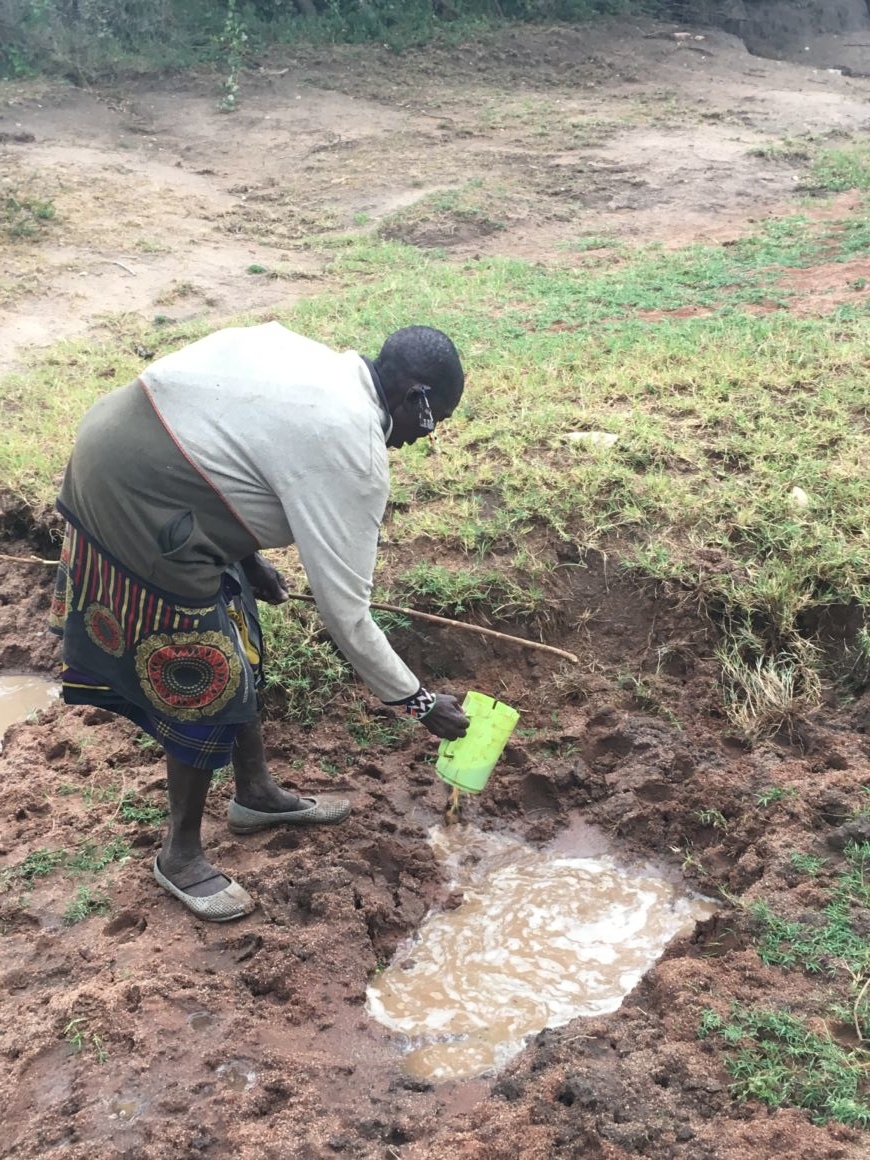
Women are often forced to scoop water from muddy holes such as this one to get water for their family as it is their only option.
First she scooped the cow poop from the hole as the last group to water had been a boy and his heard of cattle. The mother slowly, cup by cup, scooped water and deposited it into her jerry can so that it could be hoisted on her back for the long journey back to her home. Next a group of young herdsman came to the site interested in what we were doing. We told them that the spring was going to be developed and the water piped to a tank farther down the hill closer the road. They were very excited.
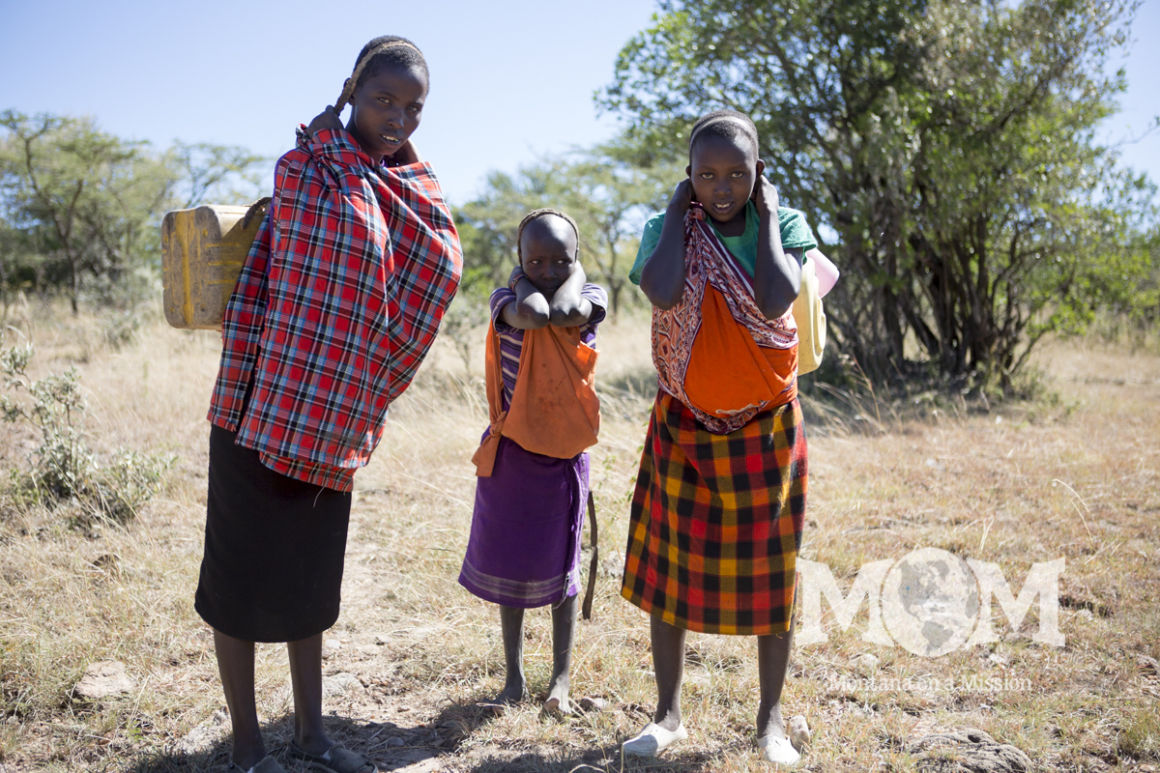
Women and young girls walk very long distances in the Ripoi Nkineji areas to fetch water. Very often this water comes from a dirty, contaminated source
Soon the project was underway, the spring water was collected and running into the tank by the road. The water was clean and pure, the people loved it. The only problem with this solution to the water trouble is that the spring is seasonal and dries up for part of the year or when rains are not plentiful (which is most of the time). A Borehole in the area would bring sustainable and clean water to the community year-round. This would allow the people to water their herds and have precious clean water for their own consumption and cooking.

A mother and her newborn baby. This woman gave birth at the spring during a water development project in the Ripoi area.
Water is so available to us in the United States that we tend to forget its significance. We can grab a shower or a cup of ice water at any time we like. We can fill our coffee pots without having to walk miles to get the water. In remote regions of Kenya people must walk miles for a cup of dirty, warm water. Bathing is a luxury as is just having enough water to stay healthy or alive.
Providing families with the opportunity to have clean, safe water changes lives! Would you consider being a part of this amazing gift? A finished borehole project in rural Kenya costs an average of $40,000. This includes the drilling, and purchase and installation of a solar pump system and holding tanks. Each of our boreholes serve from 1000 – 4000 people with clean water.
You can make a secure, tax-deductible donation by check or online at montanaonamission.org
Be sure to select the H2O For Life Africa Fund from the drop-down menu.

